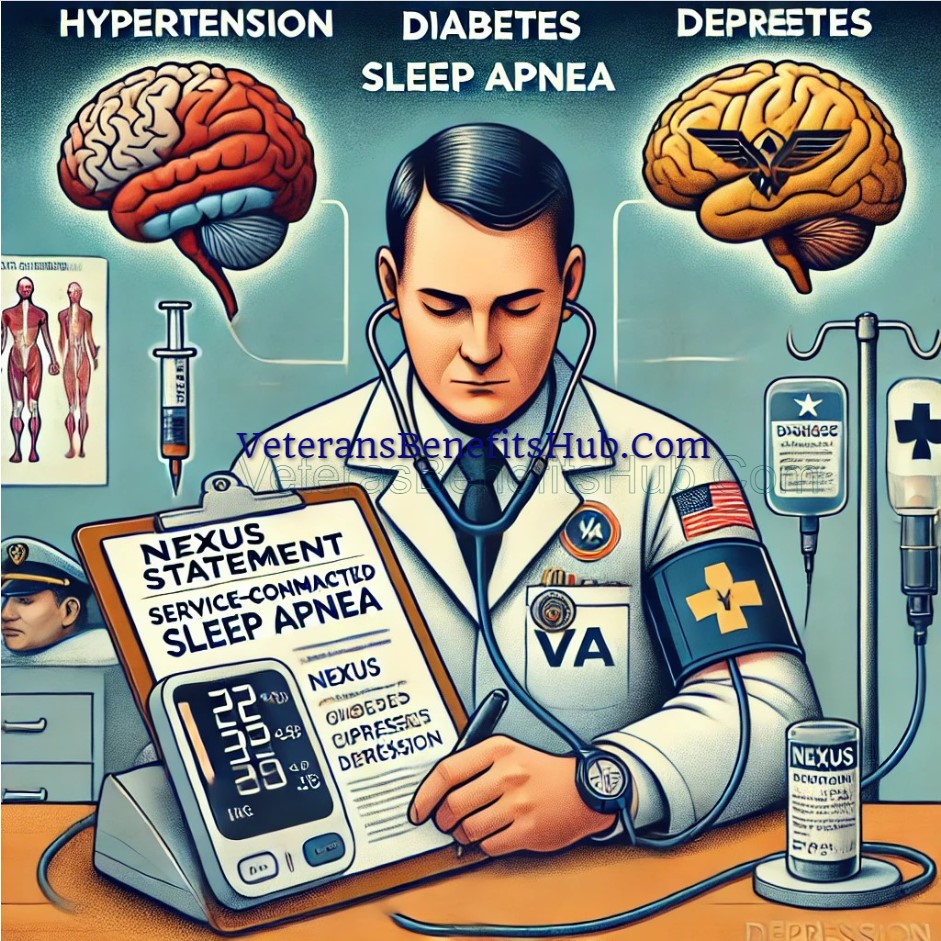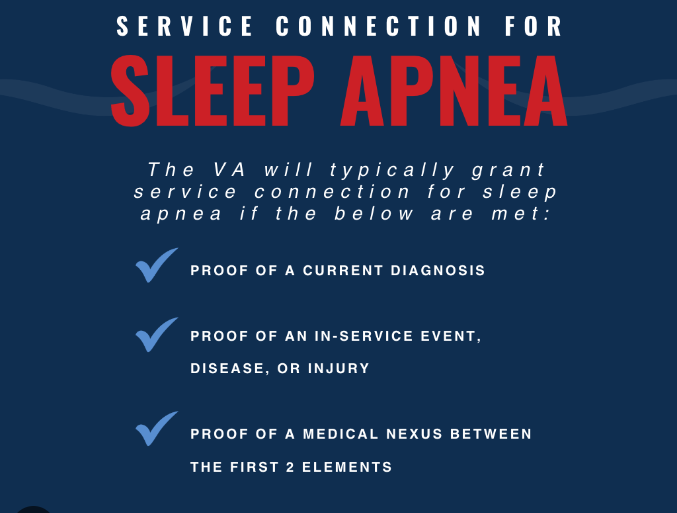
In this article, we will explore the top three conditions that VA rating specialists often see veterans claim as secondary to their service-connected sleep apnea.
A Word of Caution:
Before diving in, it’s important to note that nothing is guaranteed in the VA claims process. If someone claims they can guarantee a favorable outcome, they are likely misleading you. There have been many cases where VA rating specialists thought a claim would be approved, only for it to be denied. On the other hand, claims that seemed far-fetched have sometimes been approved. Keep this in mind when submitting claims for secondary conditions.
For secondary conditions, it is essential to provide a Nexus statement—a document prepared by a medical professional that explains how your condition is linked to your military service. Veterans have the option of undergoing a Compensation and Pension (C&P) exam or having their private doctor complete a public Disability Benefits Questionnaire (DBQ), available on the VA’s website.
The Top 3 Conditions Claimed Secondary to Sleep Apnea:

1. Hypertension (High Blood Pressure)
The first condition commonly claimed as secondary to sleep apnea is hypertensive vascular disease, also known as hypertension. Let’s focus on the 10% rating criteria, as this often causes confusion. For a 10% rating, one of the following must be true:
- Diastolic pressure is predominantly 100 or more
- Systolic pressure is predominantly 160 or more
- There is a history of diastolic pressure predominantly 100 or more, and continuous medication is required for control.
It’s essential to meet both requirements for a 10% rating in the third scenario: a history of diastolic pressure of 100 or more and the need for continuous medication. Veterans can track their blood pressure at home and keep a spreadsheet as evidence. If you believe you meet the criteria for a 20% rating (diastolic pressure predominantly 110 or more or systolic pressure predominantly 200 or more), providing your own records or notes from your doctor is crucial.
Additionally, hypertension or isolated systolic hypertension must be confirmed by readings taken on two or more occasions over at least three different days. So, whether you are monitoring your own blood pressure or having a private doctor or VA doctor take readings, proper documentation is essential.
2. Diabetes Secondary to Sleep Apnea
The second condition often claimed as secondary to sleep apnea is diabetes mellitus, particularly Type 2 diabetes. For these claims, you need a medical professional to provide a diagnosis and a rationale linking the diabetes to sleep apnea via a Nexus statement.
It’s not a bad idea to research medical studies or literature supporting this connection—sources like the Mayo Clinic often provide valuable insights. Additionally, you can refer to the Diabetes Mellitus Type 2 DBQ, which can guide your claim.
In this form, Section 3A asks if the veteran has any recognized complications of diabetes, such as:
- Diabetic peripheral neuropathy (affecting the upper or lower extremities)
- Diabetic nephropathy or renal dysfunction
- Other complications
Section 3B asks if any of these conditions are “at least as likely as not” caused by diabetes, which constitutes a secondary medical opinion.
If you’re dealing with other conditions like hypertension, stroke, skin conditions, or eye conditions, these can also be linked through secondary conditions, sometimes referred to as “stacking.” In this case, the doctor completing the DBQ must provide a clear rationale in the remarks section explaining how they reached their conclusions.
3. Depression Secondary to Sleep Apnea
The third common condition linked to sleep apnea is depression. Veterans claiming depression secondary to sleep apnea must clearly explain to the C&P examiner how their sleep apnea contributes to their mental health condition.
For instance, you could describe how severe snoring or breathing issues force you and your spouse to sleep in separate bedrooms, which may impact your emotional well-being and relationship. It’s also important to familiarize yourself with the General Rating Formula for Mental Disorders to determine if you meet the criteria for a 0%, 10%, 30%, 50%, 70%, or 100% disability rating.
There are proposed changes to these criteria coming in April 2025, so be sure to stay updated if you’re pursuing a mental health claim.
Conclusion:
These are the top three conditions that VA rating specialists frequently see veterans claim as secondary to their service-connected sleep apnea: Hypertension, Diabetes, and Depression. Many veterans succeed in their claims by submitting private evidence or attending a C&P exam.
Disclaimer:
This article is for informational purposes and should not be considered professional legal or medical advice. While the author has had a successful VA rating outcome, veterans should conduct their own research and apply the relevant findings to their specific cases.
